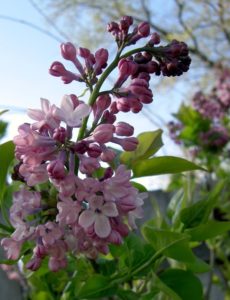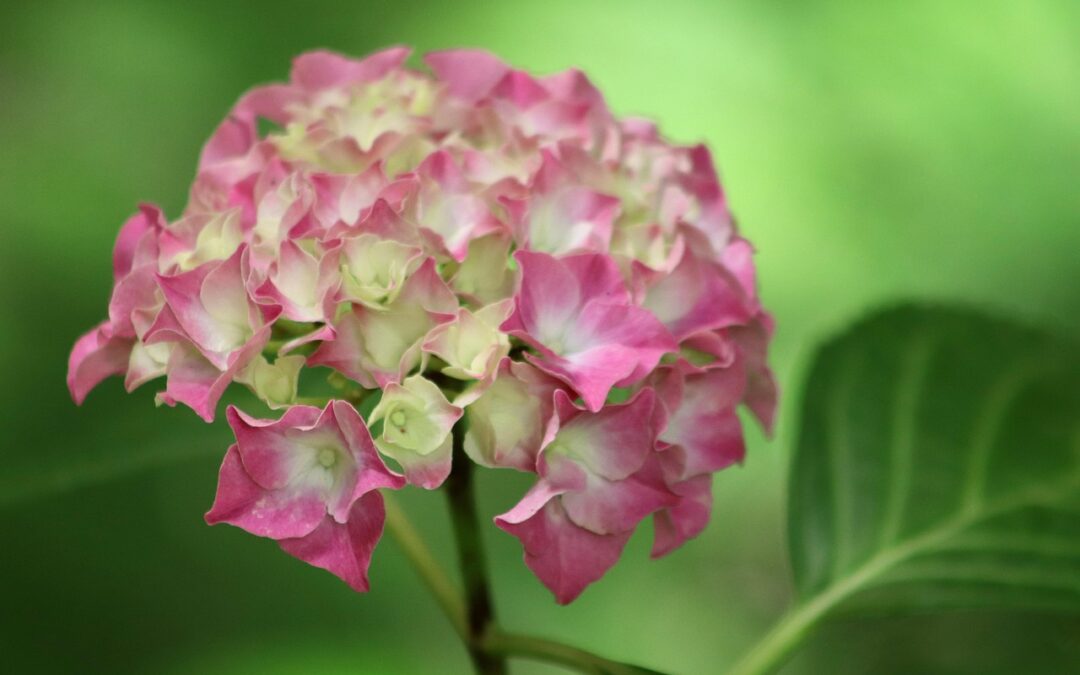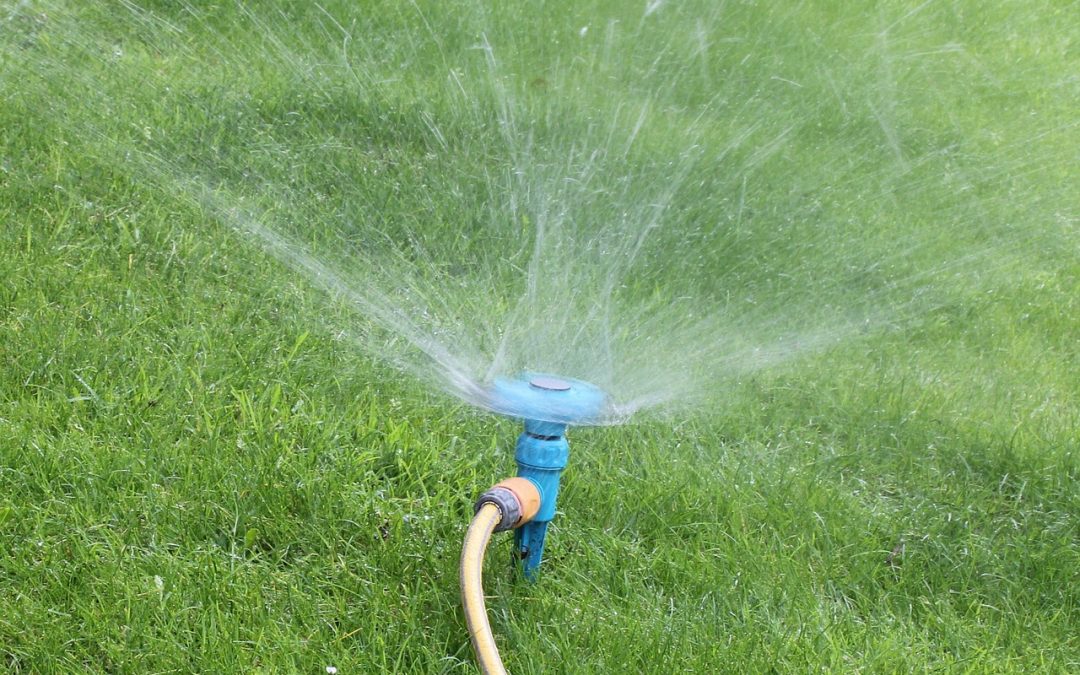
Seasonal Tips
October brings a crisp change to Southeastern Wisconsin—cool nights, brilliant foliage, and the promise of the first hard frost by month’s end (typically late October in Zone 5). This transitional period is perfect for wrapping up summer chores, tucking in tender plants, and laying the groundwork for a vibrant spring. Here are five essential tips to help you make the most of October in your garden:
1. Clean Up and Combat Disease
As foliage dies back, spent annuals, diseased leaves, and vegetable debris can harbor pathogens and overwintering pests.
- Remove spent foliage: Pull out tomato vines, pepper plants, and any annuals that have stopped producing.
- Inspect perennials: Cut back ornamental grasses to 4–6 inches and trim back hardy perennials like rudbeckia and sedum after foliage browns.
- Dispose wisely: Compost only healthy green material. Bag and discard anything showing signs of blight, powdery mildew, or insect damage to prevent reinfestation next year.
- Sanitize tools: Wipe pruners and shears with a 10% bleach solution or 70% isopropyl alcohol between cuts to avoid spreading disease.
2. Plant Spring-Flowering Bulbs
October is prime time for tulips, daffodils, crocus, hyacinths, and alliums. Planting now ensures robust root development before winter.
- Choose quality bulbs: Look for firm, plump bulbs without soft spots.
- Select sunny to part-sun locations: Most bulbs prefer at least 6 hours of light.
- Prepare planting beds: Loosen soil to 8–10 inches, amend with compost or bulb-planting mix for good drainage.
- Plant at correct depth: A general rule is three times the bulb’s height (e.g., a 2-inch bulb goes 6 inches deep).
- Mulch lightly: Apply a 2-inch layer of shredded bark or leaf mold to regulate soil temperature and moisture.
3. Sow Cover Crops and Amend Beds
Bare beds left unattended are prone to erosion and nutrient loss. Cover crops protect and enrich your soil over winter.
- Best choices for SE Wisconsin: Winter rye, hairy vetch, and crimson clover.
- Timing: Broadcast seed in mid-October, lightly rake in, and water if dry.
- Benefits: Roots bind soil, add organic matter, suppress weeds, and fix nitrogen (leguminous varieties).
- Spring incorporation: In May, cut cover crops at bloom and work them into the soil as green manure for a healthy, fertile garden.
4. Protect Tender Plants and Containers
While perennials handle frost, many container plants and borderline-hardy specimens need extra care.
- Move pots: Relocate sensitive annuals, citrus, and tropicals to a garage, greenhouse, or bright basement.
- Insulate shrubs: Wrap the root balls of container-grown shrubs in burlap or bubble-wrap.
- Apply mulch: Heap 3–4 inches of straw or shredded leaves around the base of tender perennials (hostas, coral bells) to buffer against freeze-thaw cycles.
- Use frost cloth: Keep a roll on hand for unexpected late-month cold snaps; drape over vulnerable crops like lettuce or pansies overnight.
5. Lawn Care: Aerate, Overseed, and Feed
October is the sweet spot for promoting a thick, resilient lawn before winter dormancy.
- Core aeration: Rent or borrow a core aerator to relieve compaction, especially in high-traffic areas.
- Overseed: Spread a shade- or sun-mix, depending on your yard, focusing on thin or bare spots.
- Fertilize: Apply a slow-release, high-potassium fertilizer (no “weed-and-feed” blends) around mid-October to strengthen roots.
- Leaf management: Mow leaves with your mower’s mulching setting or rake them onto beds for composting—avoiding a thick mat on turf that can smother grass.
Looking Ahead to Spring
By tackling these October tasks—cleaning up, planting bulbs, cover cropping, protecting the tender, and fortifying your lawn—you’ll ensure your Southeastern Wisconsin garden weathers winter smoothly and bursts to life come spring.
For bulbs, soil amendments, frost cloth, and expert advice, visit Heritage Hill Nursery here in Cedarburg, or shop online at heritagehillnurseryinc.com. Here’s to a productive October and a garden ready for every season!

Seasonal Tips
As summer’s heat gives way to cooler nights and the first hints of autumn, September in Southeastern Wisconsin is a pivotal month in the garden. You’re juggling the final harvest of warm-season crops with planting and prepping for fall and even spring blooms next year. Here are five essential tips—tailored to Zone 5’s climate—to help you make the most of this transitional month.
1. Adjust Watering and Refresh Mulch
- Scale back irrigation gradually. With cooler overnight temperatures and occasional rain, reduce supplemental watering to about ¾ inch per week. Early-morning watering remains best to minimize fungal issues.
- Top up mulch layers. A fresh 2- to 3-inch layer of organic mulch (shredded bark, leaf mold, or straw) conserves moisture, insulates roots, and keeps weeds at bay as temperatures fluctuate.
- Watch container plantings. Pots and hanging baskets dry out faster as days shorten—check them every other day, and consider adding water-retaining crystals or switching to thicker-walled containers.
2. Plant Fall Crops and Cover Crops
- Direct-seed cool-season vegetables such as:
- Leafy greens: Spinach, arugula, and lettuce varieties that bolt slowly in cooler air.
- Roots: Radishes, beets, and carrots—thin seedlings as they emerge to 2–3″ apart.
- Transplant hardy starts of kale, broccoli, and cabbage in early September to give them time to establish before frost.
- Sow cover crops (winter rye, clover, or hairy vetch) in bare beds by mid-month. They protect soil structure, suppress weeds, and add organic matter come spring.
3. Lawn Care: Aeration, Overseeding, and Feeding
- Core-aerate compacted turf to improve oxygen, water, and nutrient penetration. Early September is ideal for strong seedling establishment.
- Overseed bare or thinning patches with a cool-season grass mix formulated for full sun or shade, depending on your lawn.
- Apply a fall fertilizer high in phosphorus and potassium to strengthen roots and help grass recover from summer stress. Aim for a slow-release formula in mid-September.
4. Clean-Up and Disease Management
- Remove spent annuals and diseased foliage from vegetables and ornamentals. Compost only healthy debris; discard any material showing signs of blight or mildew.
- Rake fallen leaves regularly. While a light mulch of leaves can insulate perennials, a thick mat can smother turf and encourage slugs and fungus.
- Sanitize tools between uses—especially after cutting back tomatoes or squash—to prevent pathogen spread. A 10% bleach solution or 70% isopropyl alcohol works well.
5. Spring Bulbs and Perennial Division
- Plant spring-flowering bulbs (tulips, daffodils, crocus) between late September and early October. Ensure good drainage by mixing in bulb-planting mix or compost.
- Divide overgrown perennials such as daylilies, hostas, and iris. Lift clumps, separate into smaller sections with healthy shoots and roots, then replant and water in well.
- Feed divisions and new bulbs with a balanced, low-nitrogen bulb food to jump-start root growth before the ground freezes.
Ready for What’s Next?
By following these September gardening steps—adjusting water, seeding for fall, caring for lawns, managing cleanup, and planting bulbs—you’ll bridge the gap between summer’s end and a vibrant spring ahead.
Stop by Heritage Hill Nursery for all your cool-season seedlings, bulbs, soil amendments, and expert advice. You can also browse online at heritagehillnurseryinc.com.
Here’s to a productive September and a garden that shines through every season!
Seasonal Tips, Older Entries
Lilacs are hardy, easy to grow, and low maintenance. They can grow from 5 to 15 feet tall, depending  on the variety. The fragrant flowers are good for cutting and attractive to butterflies.
on the variety. The fragrant flowers are good for cutting and attractive to butterflies.
Planting
Grow lilacs in fertile, humus-rich, well-drained, neutral to alkaline soil (at a pH near 7.0). If your soil is in poor condition, add compost to enrich.
Select a site where your lilac will get full sun—at least 6 hours. If lilacs don’t get enough sun, they will not bloom well.
Make sure the site drains well. Lilacs don’t like wet feet and will not bloom with too much water.
Plant in either spring or fall.
Transplanting lilacs from a nursery is easy. If it’s container-grown, spread out the roots as you settle the plant into the ground; if it’s balled or burlapped, gentle remove it and any rope before planting. Set the plant 2 or 3 inches deeper than it grew in the nursery, and work topsoil in around the roots. Water in. Then fill in the hole with more topsoil.
Space multiple lilac shrubs 5 to 15 feet apart, depending on the variety.
Read More *Courtesy Old Farmers Almanac

Seasonal Tips
August in Southeastern Wisconsin brings hot, humid days and warm nights—perfect for lush growth, but also demanding extra care in the garden. As the peak of summer shifts toward early fall, your beds and borders need attention to stay healthy, productive, and beautiful. Here are five essential tips to keep your August garden thriving in Zone 5:
1. Water Deeply and Mulch Wisely
August heat can stress plants and dry out beds quickly. Aim to water in the early morning, when temperatures are cooler and evaporation is minimal. Give your shrubs, vegetables, and annuals a deep soak—about 1–1½ inches of water per week—rather than quick, shallow sprinkles. This encourages roots to grow deeper, making plants more drought-tolerant.
After watering, replenish or add a 2–3-inch layer of organic mulch (shredded bark, composted leaves, or straw) around your plants. Mulch helps retain soil moisture, suppress weeds, and moderate soil temperature. Just be sure to keep it a few inches away from stems and trunks to prevent rot.
2. Scout for Pests and Fungal Issues
Warm, humid conditions are ideal for pests and diseases. Check plants daily for signs of trouble:
- Japanese beetles on roses, grapes, and ornamentals—handpick early in the morning.
- Squash vine borer on pumpkins and squash—watch for wilting vines and bore holes at the crown.
- Powdery mildew on cucurbits and ornamentals—remove severely affected leaves and improve air circulation.
- Aphids and whiteflies on tender new growth—blast off with a garden hose or apply insecticidal soap.
Rotate watering methods away from overhead sprinklers to reduce leaf wetness, and treat any outbreaks promptly with organic options like neem oil or horticultural oil.
3. Harvest, Preserve, and Succession Plant
Your summer crops—tomatoes, beans, peppers, cucumbers—should be coming in strong now. Harvest regularly to encourage continued production and prevent over-ripening. Preserve bounty by canning, freezing, or fermenting excess.
At the same time, plan for a fall harvest:
- Direct-seed fast-maturing greens (arugula, spinach, lettuce) and root crops (radishes, beets) in mid-August.
- Transplant seedlings of kale, broccoli, and cabbage started indoors earlier.
- Sow cilantro and parsley for autumn flavor, and consider snap pea plantings for a late-season treat.
4. Deadhead, Divide, and Feed Your Flowers
Keep flower beds looking their best by deadheading spent blooms on annuals and perennials like petunias, rudbeckia, and coneflowers. This prevents seed set and redirects energy into new growth.
August is also an ideal time to divide overgrown perennials—daylilies, hostas, and phlox benefit from division to maintain vigor. Lift clumps, separate them into smaller sections, and replant immediately with fresh compost or organic matter. After division, give them a light feeding with a balanced, slow-release fertilizer to support recovery before cooler weather sets in.
5. Plan Ahead for Fall and Lawn Health
As summer winds down, begin prepping for fall plantings and winter lawn health:
- Clean up any fallen leaves, spent annuals, and vegetable debris to reduce overwintering pests and diseases.
- Top-dress perennial beds with well-aged compost to boost soil structure and nutrient levels.
- Order spring-flowering bulbs (tulips, daffodils) now to ensure the best selection; store them in a cool, dark place until planting in September.
- For your lawn, consider aeration and late-summer overseeding in mid-August, followed by a light application of high-nitrogen fertilizer to encourage root development before frost.
Keep Your Garden Thriving!
By following these August gardening tips—wise watering, vigilant scouting, timely harvesting and succession planting, flower-bed maintenance, and fall preparation—you’ll set your garden up for success through the end of the season and into spring.
For all your supplies, seedlings, and expert advice, visit Heritage Hill Nursery at 10801 Pleasant Valley, Cedarburg, WI 53012, or explore our offerings online at heritagehillnurseryinc.com. Happy gardening!

Seasonal Tips
As July’s high temperatures and humidity settle in, your Southeast Wisconsin garden needs a little extra care to stay lush and productive. From keeping soil moisture consistent to staying ahead of pests and diseases, a few strategic tasks each week will help your plants power through the heat. Here are five essential July tips to maintain vibrant blooms, strong growth, and a healthy, low-maintenance landscape all month long.
Deep, Infrequent Watering
- Water early in the morning to reduce evaporation and fungal risk.
- Give established shrubs and perennials a thorough soak (1–1½ inches) once a week, rather than light daily sprinkles. This encourages deeper root growth and greater drought resilience.
Stay Vigilant Against Pests & Diseases
- Inspect leaves and stems weekly for signs of Japanese beetles, spider mites, or fungal diseases (black spot on roses, powdery mildew on phlox).
- Treat early with insecticidal soap or a targeted fungicide to prevent outbreaks from spreading.
Deadhead & Pinch to Extend Bloom
- Remove spent flowers on perennials and shrubs (coneflowers, phlox, roses) to encourage new bud formation and maintain a tidy appearance.
- For annuals like petunias and geraniums, pinch back leggy growth to promote a bushier habit and continued flowering.
Mulch & Weed Management
- Refresh or add a 2–3″ layer of organic mulch (bark, straw, or chopped leaves) around plants to conserve moisture, suppress weeds, and keep soil temperatures stable.
- Pull weeds by hand before they set seed—mid-summer weeds can rapidly produce a second generation if left unchecked.
Feed & Support Summer Performers
- Apply a balanced, slow-release fertilizer (e.g., 10-10-10) to heavy feeders like roses, hydrangeas, and vegetables to sustain bloom and fruit development.
- Stake or cage tall perennials (delphiniums, tall phlox) before they flop under the weight of rain or blooms.
Seasonal Tips
As the heat of early summer settles in across Southeast Wisconsin, your garden is entering one of its most rewarding—and demanding—phases. June brings long days of sunshine, making it the perfect time to establish strong roots, manage emerging growth, and keep pests at bay. By adopting a few simple routines each week, you’ll help your plants thrive through warm days and unpredictable rains. Here are five essential tips to guide your June gardening efforts and ensure your landscape stays healthy, vibrant, and low-maintenance all season long.
Water Early and Deep
- Aim to water your garden beds and containers in the early morning (before 9 AM) to minimize evaporation and fungal risk.
- Give shrubs and perennials a deep soak—about 1 inch of water—once or twice a week rather than light daily misting. This encourages roots to grow deeper and makes plants more drought-resilient.
Stay Ahead of Weeds
- Pull young weeds by hand whenever you spot them; seedlings are far easier to remove before they set seeds.
- Apply a 2–3 inch layer of organic mulch (wood chips or shredded bark) around your perennials and shrubs to suppress new weed growth and conserve soil moisture.
Deadhead and Prune Spent Blooms
- Regularly deadhead spring-flowering perennials (like peonies and pulmonaria) to tidy appearance and encourage any possible rebloom.
- Trim back any early-season flowering shrubs (forsythia, lilac) immediately after bloom to allow new buds for next year’s flowers to form.
Watch for Early Pests and Diseases
- Scout leaves—especially on roses, lilacs, and peonies—for signs of aphids or powdery mildew. Treat small infestations promptly with insecticidal soap or neem oil.
- Keep foliage dry by pruning overcrowded branches and ensuring good air circulation around your plants.
Feed and Divide Perennials
- Apply a balanced, slow-release granular fertilizer (e.g., 10-10-10) to established perennials and new plantings to support summer growth.
- If spring-blooming perennials (like hosta, iris, or bleeding heart) have become crowded, lift and divide now—replant healthy sections immediately and mulch to reduce transplant stress.



 on the variety. The fragrant flowers are good for cutting and attractive to butterflies.
on the variety. The fragrant flowers are good for cutting and attractive to butterflies.
